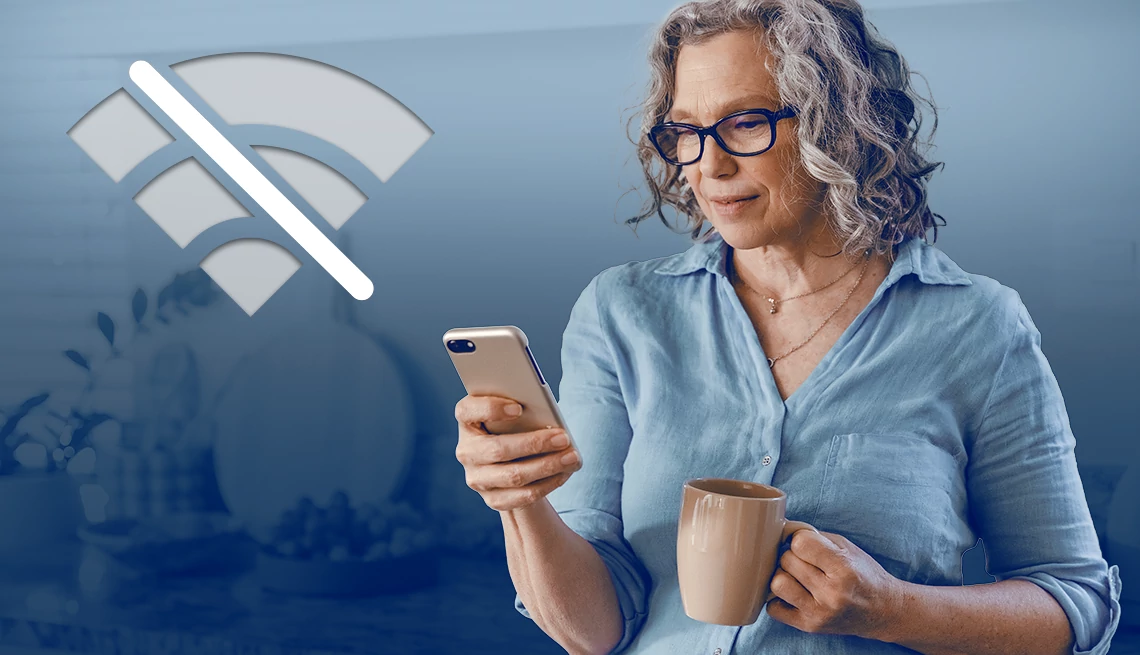
As acp ends, older adults worry about paying for internet
- Select a language for the TTS:
- UK English Female
- UK English Male
- US English Female
- US English Male
- Australian Female
- Australian Male
- Language selected: (auto detect) - EN
Play all audios:

AREAS WITH HIGH PARTICIPATION. States and territories that have among the highest rates of poverty have benefited greatly from the program. Puerto Rico, the largest U.S. territory, ranks
first in percentage of people in poverty including the states and the District of Columbia. More than half of its households were enrolled in the program as of Feb. 8. Louisiana, Kentucky,
Ohio and New York round out the top five ACP enrollment rates. Louisiana has the third-highest percentage of residents living in poverty, according to U.S. Census estimates for 2022.
Kentucky, Ohio and New York have the seventh, 14th and 10th highest percentages, respectively. LIFELINE SUBSIDY REMAINS. One decades-old federal program, Lifeline, is still an option for
households who earn 135 percent or less of federal poverty guidelines or have at least one family member in a public assistance program, such as Medicaid, the Supplemental Nutrition
Assistance Program (SNAP, formerly known as food stamps) or Supplemental Security Income. In 2024, a person who lives alone can qualify for Lifeline with a gross income of $20,331 or less in
the continental United States. Income ceilings are higher in Alaska and Hawaii. It provides a $9.25 discount on monthly phone or internet bills. Native Americans on tribal lands can get a
larger discount. A printable form is available to enroll. OLDER ADULTS ARE LESS CONNECTED ONLINE Although 9 in 10 U.S. households had home internet service in 2022, fewer than 65 percent of
adults 65 and older were subscribers, according to Leichtman Research Group in Durham, New Hampshire. Video: Why Are Older Adults Struggling to Get Internet Access? That gap in the digital
divide is what the federal discount programs were designed to fill. The number of adults 85 and older enrolled in ACP was more than 407,000 as of Feb. 8. The percentage of the oldest adults
in the program had been gradually rising past 1 percent since the subsidies began, and the number of subscribers 85 and older increased almost 5½ times since the end of 2021. OLDER ADULTS
CAN BENEFIT FROM DIGITAL LITERACY TRAINING The Affordable Connectivity Program has been part of about $65 billion approved to improve access to reliable high-speed internet contained in the
bipartisan infrastructure law that Biden signed Nov. 15, 2021. The law allocates $2.75 billion for digital literacy training to make sure that everyone — regardless of language, ability or
age — has the skills needed to take advantage of their connection to the internet. Connections are important. AARP has long championed high-speed internet access and digital literacy for all
ages to help people connect with loved ones, shop, stream entertainment and work from home. “From remote work, virtual education and upskilling, telehealth and even paying bills, being
online is an integral part of our daily lives. Affordable high-speed internet service is especially important for older Americans, many on fixed incomes, who have too often been left
behind,” says Nancy LeaMond, AARP’s chief advocacy and engagement officer. EASIER COMPARISON OF PLANS. Among the requirements that will continue after the ACP money runs out is a regulation
that internet service providers display standard labels for consumers, inspired by government nutrition labeling. They will show internet download and upload speeds, monthly service costs,
taxes, and equipment and other fees. Most companies had to exhibit these labels by April 10. Small providers with 100,000 or fewer accounts have until Oct. 10. $42.5 BILLION FOR EXPANSION
TO UNDERSERVED AREAS Though the White House says broadband providers collectively offer discounted high-speed internet in areas where more than 80 percent of the U.S. population lives, more
than half the residents of rural areas don’t have the same options as those in or near cities. About 14.5 million Americans — and 22 percent of those 65 and older — don’t have access to
high-speed internet, the FCC says. Other estimates say as many as 42 million people in the U.S. are on the wrong side of the digital divide. Nearly $42.5 billion is being allocated to bring
high-speed internet to unserved areas to benefit families of all incomes, which Kahsai considers important for digital equity. The new service must have speeds of at least 100 Mbps for
downloads and 20 Mbps for uploads: * EVERY STATE is receiving at least $107 million. * NINETEEN STATES get allocations of more than $1 billion. They include Alabama, California, Georgia,
Louisiana, Michigan, Missouri, North Carolina, Texas, Virginia and Washington. * THESE RESOURCES, combined with past programs, will connect every resident and small business in each state,
territory and the District of Columbia to high-speed internet by 2030. “We have an opportunity to put a dent … in the digital divide,” Kahsai says. WAYS TO LEARN SENIOR PLANET FROM AARP Live
classes give you basic information about signing up for home internet. Its free classes are for anyone who wants to learn the basics and other skills after getting online. THE AARP VIRTUAL
COMMUNITY CENTER has regularly scheduled free technology classes. AARP FOUNDATION offers programs and services to help older adults secure jobs, benefits, refunds and social connections.
CONNECT2AFFECT from AARP Foundation can help you combat social isolation.
